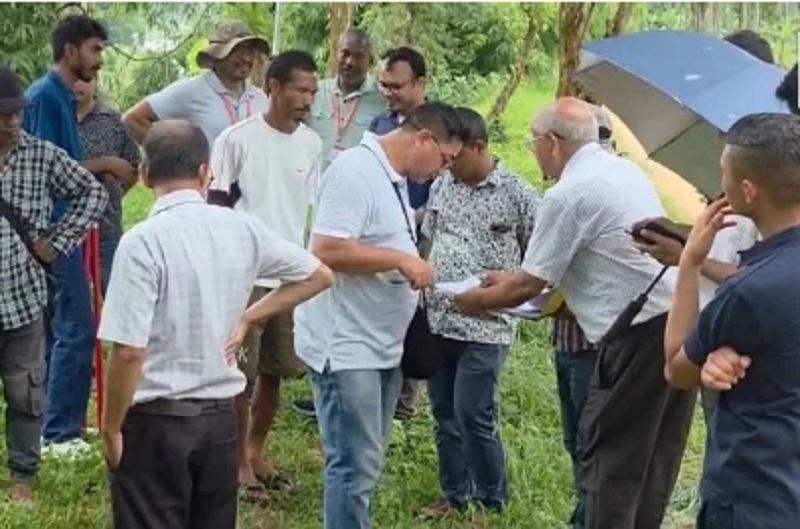Guwahati: The administrative officials from Assam and Meghalaya have said that boundary pillars are being constructed in the Hahim area of Assam’s Kamrup district, as part of efforts to resolve the border dispute that dates back to 1972, when Meghalaya was carved out of Assam as a separate state.
This effort follows a major milestone reached in March 2022, when both states signed a Memorandum of Understanding (MoU) in New Delhi in the presence of Union Home Minister Amit Shah, resolving six of the 12 disputed sectors.
The pillars are being constructed along the riverbanks of Gijang and Tirchang—passing through villages such as Umshek (Mathapota), Maspara, Malapara, Ranighar, Salpara, Thutia Bazaar near Hahim market, and finally to Rangsapara after Athiabari, which belongs to Meghalaya.
This move comes after a recent meeting on June 2, led by Assam Chief Minister Himanta Biswa Sarma and his Meghalaya counterpart Conrad K. Sangma.
Over the years, the two states have held 32 rounds of official meetings, attempting to resolve 12 areas of difference spanning over 2,700 sq km.
During the second round of talks held this month, both CMs agreed to begin erecting border pillars in the six resolved sectors — Tarabari, Gizang, Hahim, Boklapara, Khanapara-Pilangkata, and Ratacherra — by August 15, 2025.
“This is not just a concrete pillar; it’s a symbol of peace, clarity and a better future for border communities. We are committed to completing this phase well before Independence Day, as per the commitment of both chief ministers,” a senior official from the survey team said.
An official revealed that teams from both states will soon begin simultaneous construction in areas near the Gijang River.
“We’ve lived in confusion for decades, caught between two states. Now, history is being etched in stone,” said a resident from Rangthali village.
However, six sectors, Block I, Block II, Langpih, Deshdoomreah, Khanduli, and Nongwah-Mawtamur, remain unresolved.
ALSO READ: Second Assam-Meghalaya border pact expected by August 15: Cabinet minister
These areas continue to pose challenges due to ethnic tensions, competing historical claims, and the absence of consistent on-ground enforcement after the border between the two states was demarcated under the Assam Reorganisation Act, 1971.















